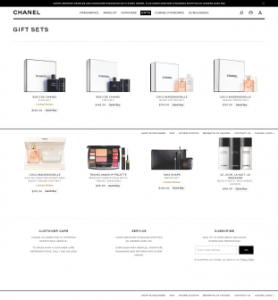Sometimes, the key to increasing ROI is not to expand your targeting, but to refine it. Columnist Kristopher Jones shares a case study where hyper-targeted advertising based on detailed customer personas produced award-winning results.

Paid advertising on social media platforms like Facebook and Instagram allows you leverage your existing customer data (emails, names, addresses) to create highly targeted campaigns that focus on getting your existing customers to buy more, more frequently. If your program is set up and executed properly, you can grow your business significantly without having to acquire new customers.
Armed with existing customer data, you can build your ultimate customer persona that defines the person or people most likely to buy your products or services. Instead of guessing, it’s best to use your existing customer data as the starting point. This process will allow you to hyper-target and acquire new customers. You will want to get as granular as possible in creating your customer persona by defining characteristics such as demographics, interests and geography.
Once you define the characteristics of your most-likely-to-buy customer, you’ll also want to place customized messages in front of those prospective customers so they learn the benefits of your products or services. More on all of this below.
To help build and expand your targets, Facebook Ads offers the ability to create “lookalike” audiences based on the characteristics of your customer data. The key to driving eye-popping performance on paid social media is all about knowing your audience better than your competition. This is your competitive advantage.
In this article, I will provide tips and strategies for leveraging audience data and customer avatars to outperform your competition.
To illustrate how to put these tips into action, I’ll walk you through a case study of a sperm bank located in New York City that hired my firm to leverage paid social media marketing to generate highly qualified donor leads. The results of the campaign were exceptional, which resulted in my company, LSEO, being named a finalist for multiple national awards at the 2017 Search Engine Land Awards and US Search Awards.
Building the ultimate customer persona
Audience analysis represents the foundation of any marketing campaign. Intensive audience analysis and research seek to uncover the demographic and psychographic information of your target customers based on market research and your existing customer base.
Using Facebook’s Custom Audiences, webmasters can build out advertising parameters that correspond to your audience demographics, including the individual’s age, gender, primary language, geographic location and so on.
Facebook’s psychographic boundaries allow businesses to go even more granular, advertising to individuals based on their likes, interests, web browsing history, hobbies and events they attend. Advertisers can even set more specific boundaries, including segmentation by religious beliefs or political affiliations.
Facebook allows businesses to upload existing consumer information from their analytics and CRM software, including customers’ phone numbers, email address and so on. Facebook will then match this information with its own customer data to build out a custom audience. The match rate for this usually falls at about 70 percent.
Here are some important considerations to keep in mind:
- Being too granular with audience boundaries can severely limit your audience reach.
- Messages should be personalized to individual audience members based on key boundaries.
- Businesses can create lookalike audiences based on segments that deliver the highest engagement to scale your efforts.
Case study: Manhattan cryobank
LSEO was approached by a cryobank operating out of New York City in December 2016 to gather leads for its sperm donation program. Conversions would be measured by the number of people who completed a signup form and passed the genetic testing. Selected sperm donors would receive $1,500/month over a six-month engagement. By the end of their service, the sperm bank estimated that a single donor could make them approximately $100,000 in revenue.
The cryobank was losing money by not acquiring the right leads from its signup form and previous marketing engagements. The genetic screening tests for over 1,000 genetic deficits, creating an incredibly narrow window for acceptance. LSEO was asked to advertise its sperm donation program exclusively to young medical school students in New York City or young male adults in the area who were pursuing similarly affluent careers (such as lawyers). The cryobank’s total ad budget would be about $21,000 through July 2017.
The customer persona
The most important part of this campaign was delivering the right leads to the cryobank so that they didn’t lose money on failed genetic tests. The best place to start building our audience persona was with Facebook Ads. We had to limit our audience scope based on several key audience boundaries including:
- males between the ages of 21 to 29.
- medical school students at universities in NYC.
- those pursuing alternative affluent careers.
We also had to split many of our resulting leads based on income, interests and other pre-qualifiers determined by the cryobank.
Search
Using much of this audience data, we began to mine keyword data to employ over search channels and extend our omnichannel efforts. Our team used broad match modifier types to supplement our ad reach and gather more audience insights; this data allowed us to further optimize our audience and capture better leads. We also employed negative keywords to minimize ad impressions and narrow down landing page traffic.
During our paid search campaign, we instituted a number of strategies to increase our SERP real estate:
- Geo-targeting
- Location extensions
- Call extensions
- Sitelink extensions
- Callouts
By utilizing a number of different search ad extensions, we were able to keep the sperm bank’s brand top of mind for a number of highly qualified leads. This strategy effectively increased brand recall and the chances of those ads being clicked on.
Our ad copy was optimized to reflect our keyword choices, and we used Facebook’s iStock gallery to optimize our display ads. We conducted A/B testing on every single ad to analyze which ads delivered the highest engagement among our most qualified leads.
Finally, we made sure each ad ran seamlessly over mobile and desktop devices. This remained especially important because a majority of our traffic came from young males using the Facebook app on their phones.
Social and retargeting
After 100 hours, we finally had our custom audience setup and a robust AdWords campaign. We employed Buzzworthy to create a seamless landing-page experience for our ads.
We began running display ads in Facebook’s newsfeed and photo ads over Instagram. After initial rollout, we used Facebook’s Audience Network to begin extending our reach to increase our lead count. To reduce our rising ad spend, we switched our pricing model from cost-per-click (CPC) to cost-per-lead.
Finally, to ramp up our campaign efforts, we introduced remarketing to improve the sperm bank’s ROI and nurture its best leads. After introducing remarketing, our CPA (cost per acquisition) was lowered to an average of $30 for the entire campaign. With more A/B split testing, we could finally determine which ads best reached our target audience members and maintained our conversion rate. These ads began to convert at about half of the CPA of our main campaigns.
The results
The cryobank gathered an additional 1,000 local leads during their seven-month trial. This resulted in an average lead growth of 166 percent month-over-month. After accounting for the number of leads that passed the sperm bank’s genetic testing, the resulting conversion rate was about 3 percent.
In total, we earned the client an estimated $3,000,000 in additional revenue. With an ad spend of only $21,000, the ROAS was approximately 14,285.71 percent.
This project involved some of the most in-depth audience analysis strategies our team has ever undertaken. I like to emphasize this point because our organization was not necessarily contracted to extend the sperm bank’s reach but to limit it to the most qualified audience members. The client’s conversion rate did not drop at all during its campaign, either.
The implications
Beyond retail, many businesses are employing hyper-targeted audience personas to gather more specific leads. We’ve already seen this idea practiced with political campaign ads that target individuals over social media.
Businesses should begin focusing on hyper-personalization instead of audience segmentation to increase customer retention rates and drive high-quality leads for their business. The Internet of Things (IoT) is changing the way individuals consume media over social networks and is placing more pressure on brands to deliver personalized messages that can establish a connection.
Opinions expressed in this article are those of the guest author and not necessarily Marketing Land. Staff authors are listed here.
Marketing Land – Internet Marketing News, Strategies & Tips
(57)
Report Post



